How to Identify a Vintage MIJ Fernandes MG80X Guitar: A Simple Guide for You
Vintage MIJ Fernandes MG80X guitars are rare and special.
This model was made for Hide, the wild and loved guitarist from X Japan. The real MG80X came from Japan around 1991. Some had no serial numbers. But they used special parts like Gotoh tuners, a Floyd Rose tremolo, and pickups named DH-1 and SH-1x.
Here you’ll learn how to check those parts. You’ll also see where to find a “Made in Japan” stamp. Even if your guitar has no serial, there are still ways to know if it’s a true vintage.
Let’s look closer and find out what you’ve really got.
What Is the Fernandes MG80X?
Fernandes MG80X is one of the rarest signature models ever made in Japan.
The MG80X was built for Hide (real name Hideto Matsumoto), the legendary guitarist from the band X Japan. He wasn’t just famous for his music, his look, style, and sound changed Japanese rock forever. This guitar was designed to match him perfectly. That’s why it’s shaped like a pointy, twisted version of a Mockingbird. It looks loud even when it’s quiet.
Now here’s the big part: this model was mostly made around 1991, and only in Japan. It was never mass-produced like modern guitars. That’s why so many people today are hunting for it and why it’s so important to know if the one you’ve got is real.
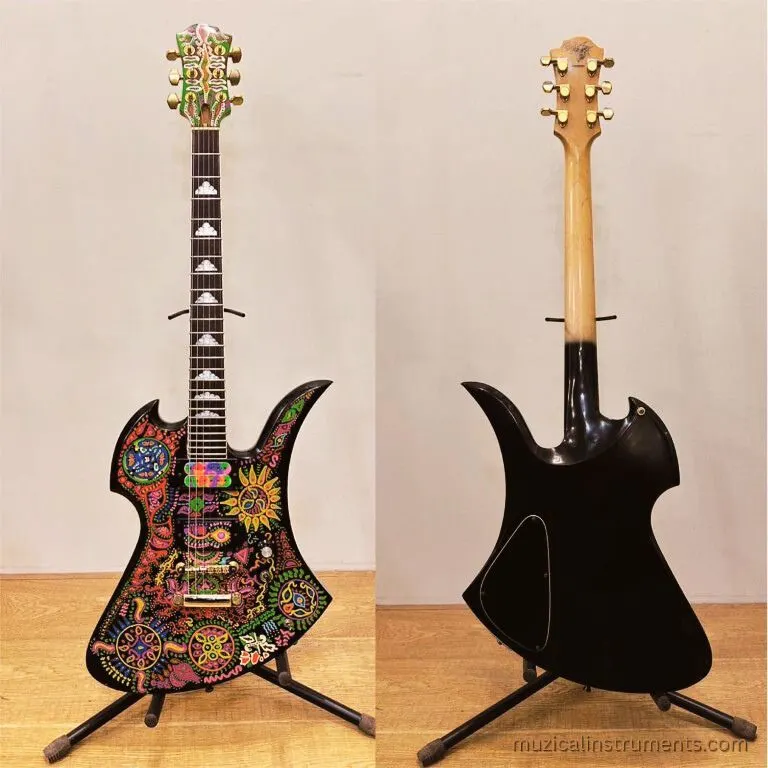
What makes the Fernandes MG80X really stand out? Look at the body. It’s bold, with sharp curves and wild finishes, usually in bright pink, yellow, or black. The neck is slim and fast, with 24 frets that feel smooth to play. Every detail, from the hardware to the pickups, was built to handle Hide’s high-energy stage shows.
If your guitar checks those boxes, you’re not just holding an instrument, you’re holding a piece of 90s rock history.
Where to Look for the “Made in Japan” Stamp on Your MG80X
Most vintage guitars from this series came out of top Japanese factories in the early ’90s. Many of them have a small stamp or sticker that says “Made in Japan.” You just need to know where to look.
Start by flipping the guitar over. Look at the back of the headstock, that’s where many MIJ marks were printed. If it’s not there, check the neck heel, where the neck meets the body. Some guitars even have the mark inside the neck pocket, but that means you’d need to remove the neck to see it (which we don’t recommend unless you know what you’re doing).
If it’s not there, take a look under the bridge, there might be a small stamp underneath.
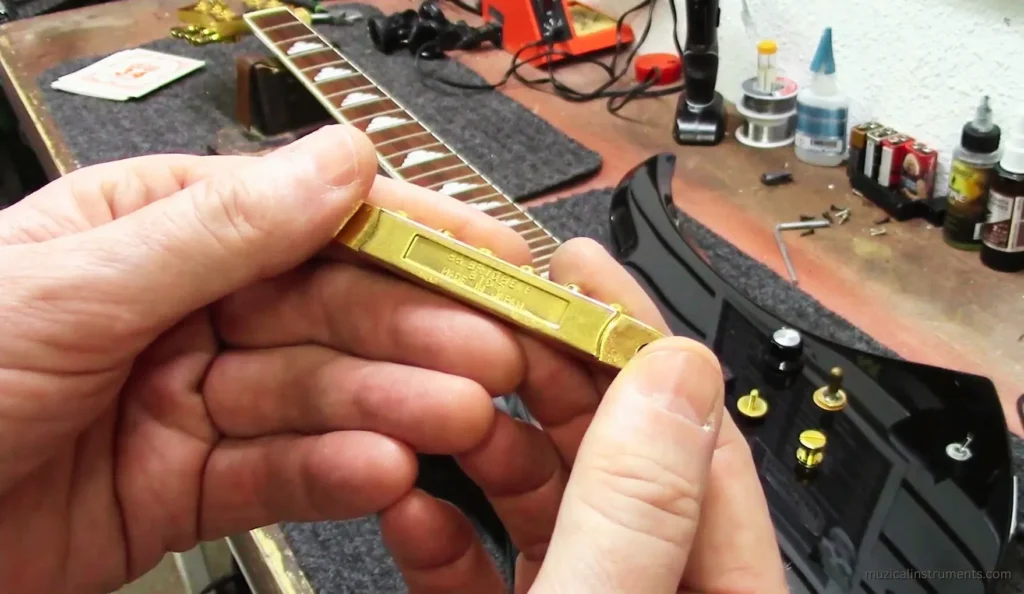
But here’s something important: Not every Fernandes MG80X has a serial number or MIJ stamp. That doesn’t always mean it’s fake. Some models were sold without them, especially in the early ’90s. Instead of relying on just one stamp, you need to look at the full picture, the pickups, hardware, body shape, and logo all tell a story.
If your guitar has a faded neck plate, aged hardware, and fits the same shape as Hide’s original MG80X, there’s a good chance it’s the real thing, even if that stamp is missing.
Confirm the Vintage Features: Pickups, Hardware, and Neck
If you want to determine if a Fernandes MG80X is real or not, you must look closely at the parts that are crucial: pickups, hardware, and neck. These are typically the most indicative.
Pickups
Start with the pickups. The MG80X was built for high-gain rock and metal, so Fernandes loaded it with powerful ones:
DH-1 in the bridge, this pickup gives you that thick, heavy tone Hide was known for.
SH-1x in the neck, a smoother, warmer pickup, great for solos and clean parts.
If your guitar has these exact pickups you’re already on the right track. If they’ve been swapped out, don’t worry, many players replaced them over the years. Just make sure they match the original setup if you’re aiming for authenticity.
Hardware
The original MG80X featured top-quality hardware, usually Japanese-sourced. Tuners were most often Gotoh, a trusted Japanese firm. The bridge was often a Floyd Rose tremolo or a double-locking design from Gotoh.
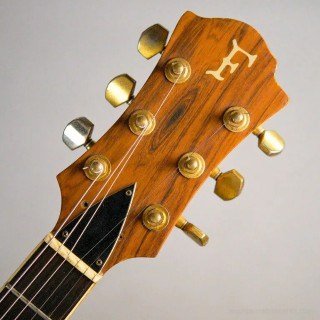
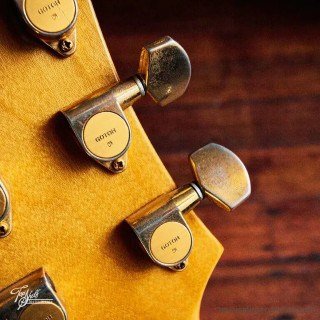
Check for wear original hardware will look slightly used but should be solid. Look out for cheap substitutes or glossy new stuff with no wear at all.
Neck and Frets
The neck on a real Fernandes MG80X is fast and slim. It should have:
24 frets
A 24.75″ scale length (like a Gibson)
A rosewood fretboard with pearl dot inlays
If it feels smooth and plays fast, that’s a good sign. The back of the neck might show some wear or yellowing from age that’s normal for guitars from the early ’90s.
By checking the pickups, hardware, and neck, you’ll get even closer to confirming if your Fernandes MG80X is the real, vintage deal.
Original vs. Common Replacement Parts on Fernandes MG80X
| Component | Original Spec (1990s) | Common Replacements or Mods |
|---|---|---|
| Bridge | Floyd Rose / Gotoh tremolo | Licensed Floyd Rose / Generic bridge |
| Tuners | Gotoh sealed tuners | Grover, Schaller, or no-brand |
| Bridge Pickup | Fernandes DH-1 | Seymour Duncan, EMG, or DiMarzio |
| Neck Pickup | Fernandes SH-1x | Swapped for higher-output models |
| Fretboard | Rosewood, dot inlays | Occasionally re-fretted or replaced |
Which Factory Built Yours? (The OEM Builders Behind MIJ Fernandes Guitars)
If your Fernandes MG80X was made in Japan, chances are it came out of one of several well-known OEM factories. Back in the ’80s and early ’90s, Fernandes didn’t always build their guitars in-house. Instead, they partnered with high-quality Japanese manufacturers who also produced guitars for brands like Tokai, Greco, and even Fender Japan.
The most commonly linked factories include:
- Tokai Gakki
- Dyna Gakki
- Kasuga
- Kawai
- Matsumoku (earlier years)
- Terada
Every factory also had its own build approach, tooling, and little idiosyncrasies. Even though it’s practically impossible to verify which factory it definitely is without records, players tend to determine it by looking at details such as:
- Neck heel shape
- Cavity routing
- Control layout and shielding
- Fret edge finish
For example, Dyna Gakki guitars are known for neat, precise neck joints and tidy control cavities. Tokai builds will usually have tidy neck heel corners and tidy frets. If the Fernandes MG80X you own displays the same tell-tale signs, you’re halfway towards confirming its manufacture.
Remember, the factory not only tells you where the guitar was produced. It also gives some clue to the workmanship and materials that have gone into it. Many collectors value a Fernandes MG80X more when it’s believed to be a Tokai or Dyna Gakki build, because those factories have such strong reputations.
If you’re not sure where yours came from, try posting photos of the neck pocket, control cavity, and pickup routes on a vintage guitar forum. There are passionate MIJ fans who can often spot a factory just by the router marks.
Possible Fernandes OEM Factories & Traits
| Factory | Known For | Possible MG80X Clues |
|---|---|---|
| Tokai Gakki | Sharp routing, crisp fretwork | Clean neck pocket, punchy tone |
| Dyna Gakki | Clean neck joints, solid wiring | Smooth trem cavity, precise cuts |
| Kasuga | Rounded heel, satin finish | Less common, unique paint jobs |
Match It Against Vintage Catalogs and Collector Sources
Once you’ve checked the parts and looked for factory signs, it’s time to compare your Fernandes MG80X to official references, like vintage catalogs and trusted collector communities. This step can confirm what year your guitar was made, which version it is, and whether it matches what Fernandes originally released.
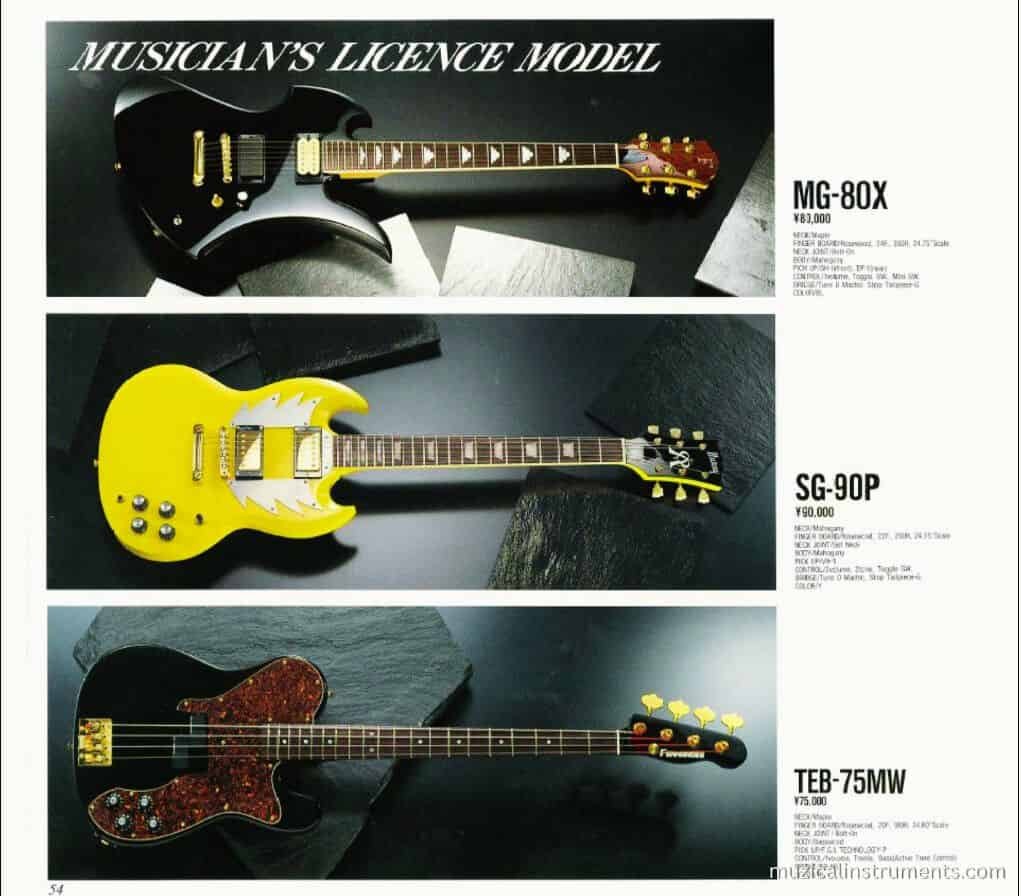
Start with the old Fernandes catalogs. The MG80X was featured in early 1990s Fernandes Japan brochures, often alongside other Hide signature models like the MG-145X and MG-120X. These catalogs show the original color options, pickup configurations, control layouts, and even model numbers. You can find scans on:
- Vintage Japan Guitars websites
- Online forums like The Gear Page or MyLesPaul
- Japanese auction listings (Yahoo Japan often has original catalog images)
Even if you don’t read Japanese, the visuals alone are helpful, compare body shape, pickup placement, knob location, and headstock details.
Reddit is also surprisingly useful. The r/Guitar and r/SlashdotGuitars subreddits often have people posting MG80X identification threads. Search terms like “Fernandes MG80X catalog 1991” or “Fernandes MG80X Hide ID help” usually lead to gold.
You can also try matching serial number formats, but as mentioned before, many MG80X units came with no serial at all so catalog images and known collector photos become your best reference.
By cross-referencing catalogs and forums, you’re not just guessing, you’re verifying your Fernandes MG80X against trusted history.
Fernandes MG80X Catalog Clues
| Catalog Year | Features | Notes |
|---|---|---|
| 1991 | DH-1, SH-1x pickups, hot pink | First known appearance |
| 1992 | Matching headstock colors | Rare black model listed |
| 1993 | Discontinued or renamed in Japan | Replaced by higher-end models |
Common Mistakes: What Fakes and Reissues Look Like
While full-on counterfeits are rare, a lot of guitars today are either reissues, heavily modified, or built from spare parts. Here are the most common red flags to look out for when verifying a true Japanese-built Fernandes MG80X:
Logo and Headstock Issues
- Vintage MG80X guitars usually have a clean Fernandes logo with even spacing and smooth edges.
- If the logo looks bold, bubbly, or misaligned, it might be a later production model or a poorly added decal.
- Some cheaper Fernandes reissues use different fonts or logo placements that don’t match the early ’90s design.
Pickup & Wiring Swaps
- Original MG80X models had a DH-1 in the bridge and an SH-1x in the neck.
- Many have been modified over the years, so replacements aren’t uncommon, but if the pickups look brand-new or mismatched with the era, that’s something to note.
- Also check the wiring under the control cavity. Messy soldering and non-matching pots could mean it’s been rebuilt.
New or Mismatched Hardware
- Real MG80X guitars came with quality parts like Gotoh tuners and a Floyd Rose-style tremolo.
- Chrome hardware that looks too shiny, generic tuners, or a non-locking trem could be signs of a rebuild or low-end reissue.
Body Shape & Paint
- The original MG80X has a very specific offset, sharp-edged body; if it looks too soft or off in proportion, compare it closely to catalog photos.
- Colors like shocking pink, bright yellow, and black were common. If it’s a color never seen in catalogs or on Hide’s stage guitars, it could be custom or non-original.
Too Clean for Its Age?
- These guitars are over 30 years old. If yours looks brand-new, no fret wear, no aging on the hardware, no scratches on the back be cautious.
- Some well-preserved examples exist, but most real MG80X guitars show at least some signs of being played or stored for decades.
Of course, not all differences mean it’s a fake. Plenty of Fernandes MG80X guitars have had parts replaced, pickups swapped, or even refinishes done by pros. But the more “off” signs you see especially if they stack up the more reason to dig deeper.
When in doubt, post photos to forums or Facebook groups that focus on MIJ guitars. The community is full of eagle-eyed players who can spot inconsistencies quickly.
No Serial Number? Don’t Panic, Here’s What It Means
Many original Fernandes MG80X guitars from the early 1990s were released without serial numbers, especially those made for the domestic Japanese market.
Here’s why:
- Fernandes didn’t have a strict serialization system for all models during that era. Some high-end instruments got serials, while others including signature or limited-run models didn’t.
- The MG80X was primarily released in Japan. Many MIJ (Made in Japan) guitars sold domestically skipped serials entirely, especially on artist models.
- Some necks may have had ink-stamped numbers that faded over time, or stickers that were removed during cleaning or refinishing.
What’s more important than the serial is how everything else lines up:
- Does the body shape match early ’90s MG80X catalogs?
- Do the pickups, hardware, and neck specs line up with known models?
- Is the finish consistent with what Hide used on stage?
- Is the construction quality clearly Japanese, not budget or toy-like?
If you’ve already confirmed the right features (see Sections 2–6), then the absence of a serial number isn’t a red flag, it’s just part of how Fernandes did things back then.
Final Step: Document and Protect Your Fernandes MG80X
Once you’ve confirmed your Fernandes MG80X is genuine, it’s worth documenting it, for your own records or future resale.
Start by taking clear photos of the guitar: front, back, headstock, pickups, neck heel, and any markings (like “Made in Japan” stamps or control cavity routes). If you’ve opened the guitar, snap the inside wiring or neck pocket too.
Next, write down key specs: pickup models (DH-1, SH-1x), bridge type (Floyd Rose or Gotoh), tuners, scale length, and any visible mods. Even small details like knob placement and finish wear help tell its story.
Keep reference links from old catalogs or forums where you found matching models, it shows you’ve done your homework.
Bonus: save images of Hide playing the MG80X, especially if yours matches his stage guitars.
Whether you plan to keep it or eventually trade or sell, this kind of documentation preserves value and proves authenticity. A well-documented Fernandes MG80X isn’t just a cool guitar, it’s a collectible piece of Japanese rock history.
If you’re into rare guitars like the MG80X, you might also appreciate a modern compact electric guitar like the Donner HUSH-X Pro for quiet, on-the-go playing.
Frequently Asked Questions About the Fernandes MG80X
1. How many Hide signature models were made?
There were several, including MG70X, 80X, and 165X possibly tied to pricing (e.g., 70X at ¥70,000, 165X at ¥165,000).
Those models were featured in promo booklets and magazines dedicated to Hide’s guitars but finding full spec lists or catalogs is still rare.
2. I can’t find a serial number is that normal?
Absolutely. Records from Harmony Central note Fernandes used white serial stickers on MIJ heads, but not consistently. Many MG80X models, especially artist editions, were released without serial numbers, particularly those meant for Japan. Not seeing one doesn’t mean yours is fake.
3. Any tips from real MIJ finders?
Yes, gear collectors say some vintage MIJ Fernandes guitars like the Strat copies from the late ’80s often pop up in pawn/estate shops.
The same quality craftsmanship tends to apply to MG80X models, so keep an eye out in unexpected places.
4. Where can I go for help with ID or identifying age?
Forums like The Gear Page and Harmony Central are full of MIJ experts
5. What’s the best way to confirm my MG80X is legit?
Stick with visuals and details:
Compare headstock logos and font styles
Look at pickup gear (DH‑1/SH‑1x), Gotoh or Floyd tuning system
Match body shape and finish to catalog scans or Hide-stage photos
Share clear photos in collector forums, people there will point out factory clues like routing, heel shape, or hardware layout
6. Can I still get parts for a Fernandes MG80X?
Some parts like tremolos, knobs, and pickups can be replaced with similar modern hardware. However, MG80X-specific pickguards, pickup rings, and custom paint jobs are hard to source and may require custom work.
